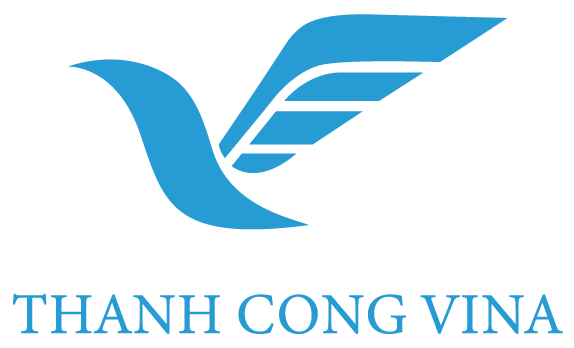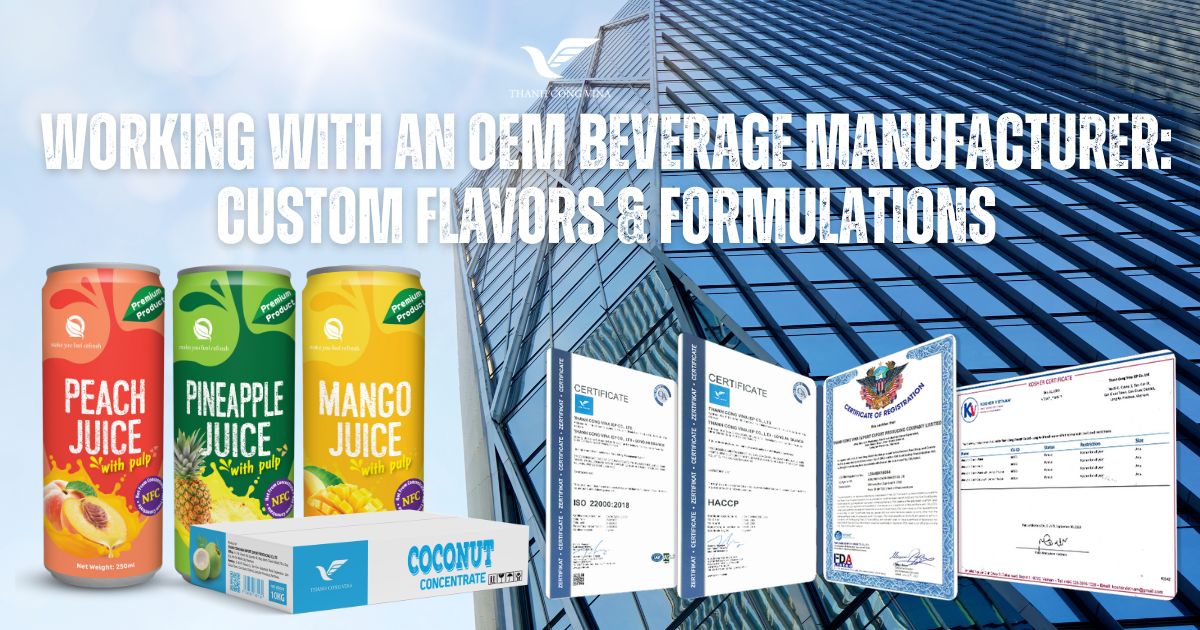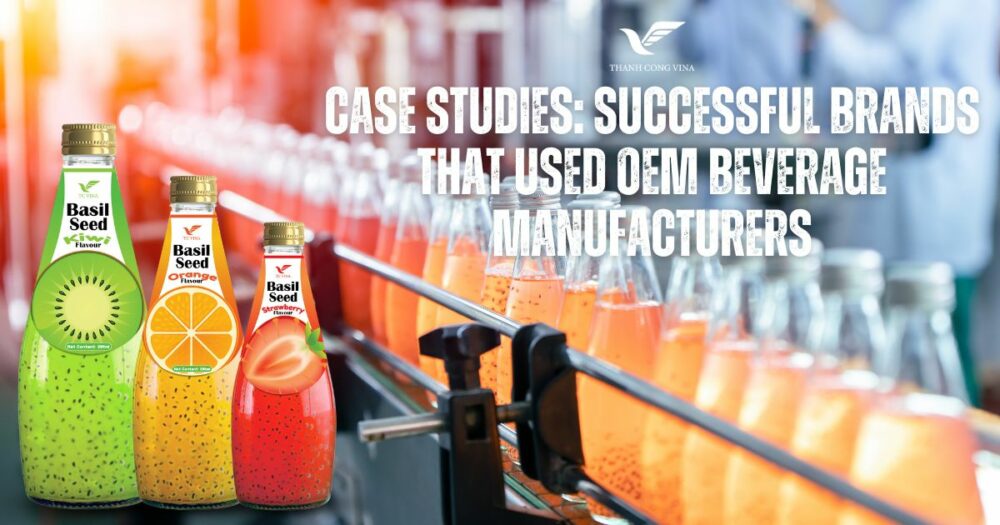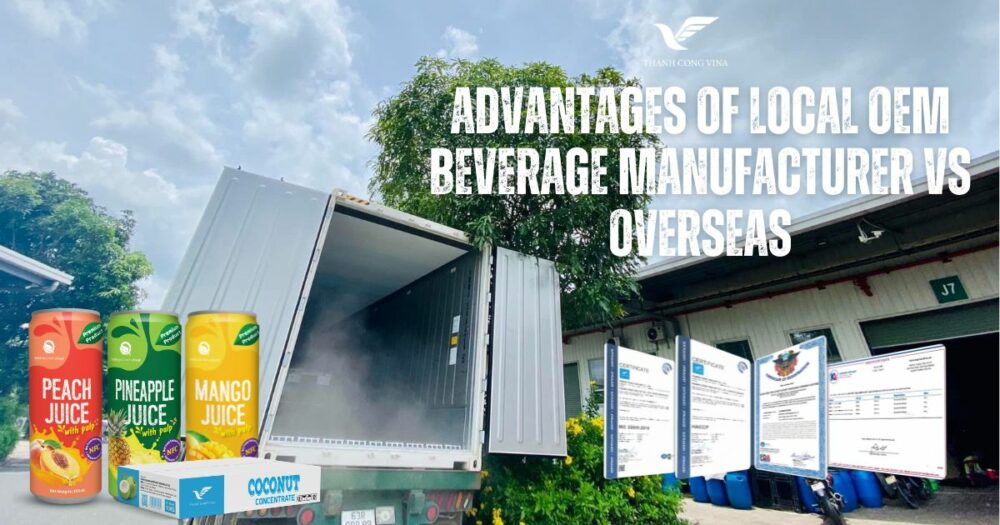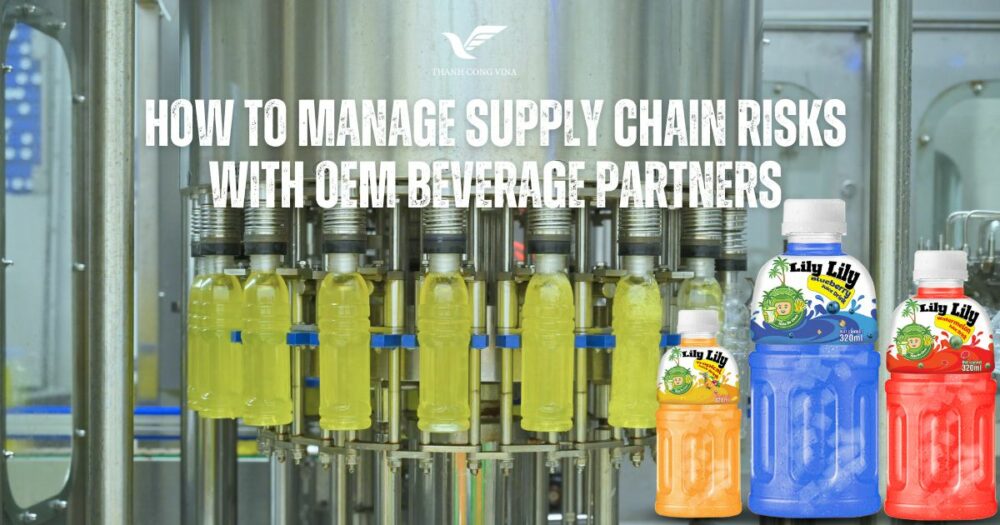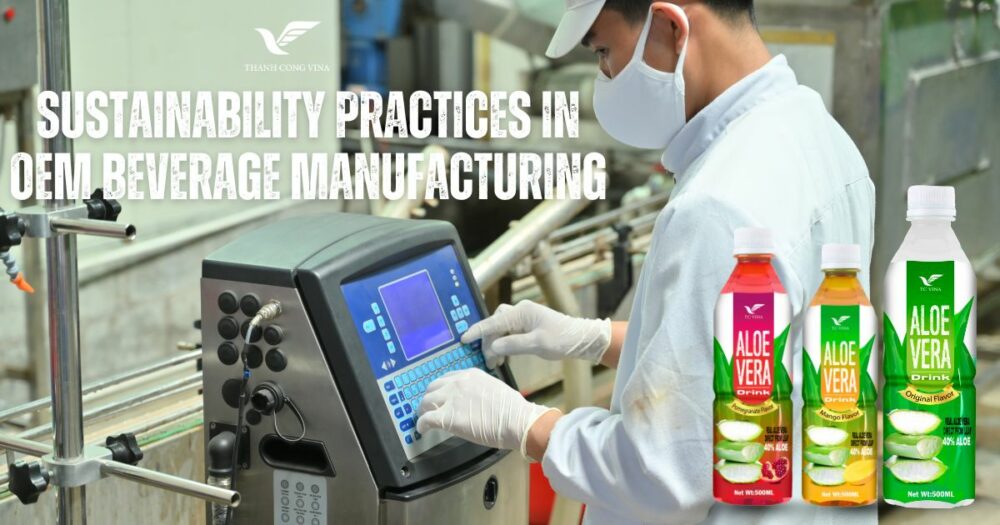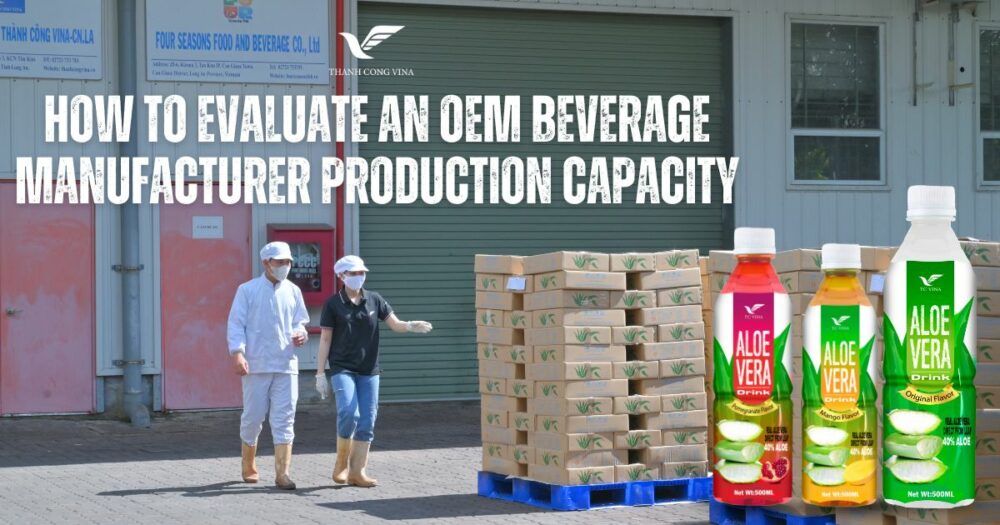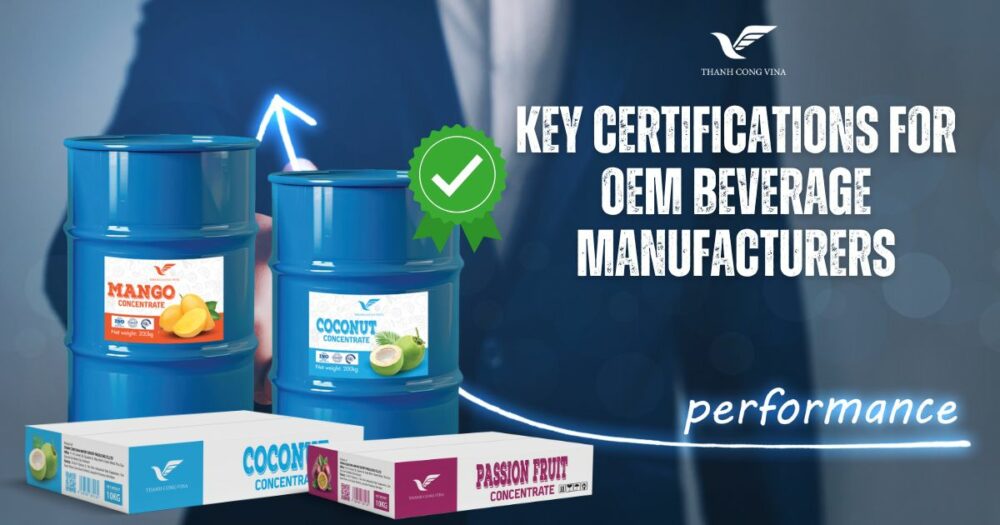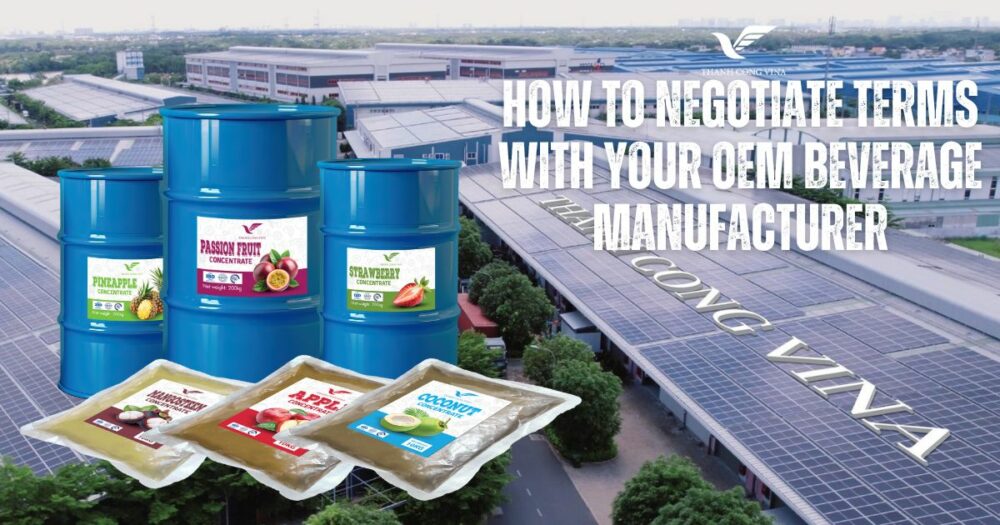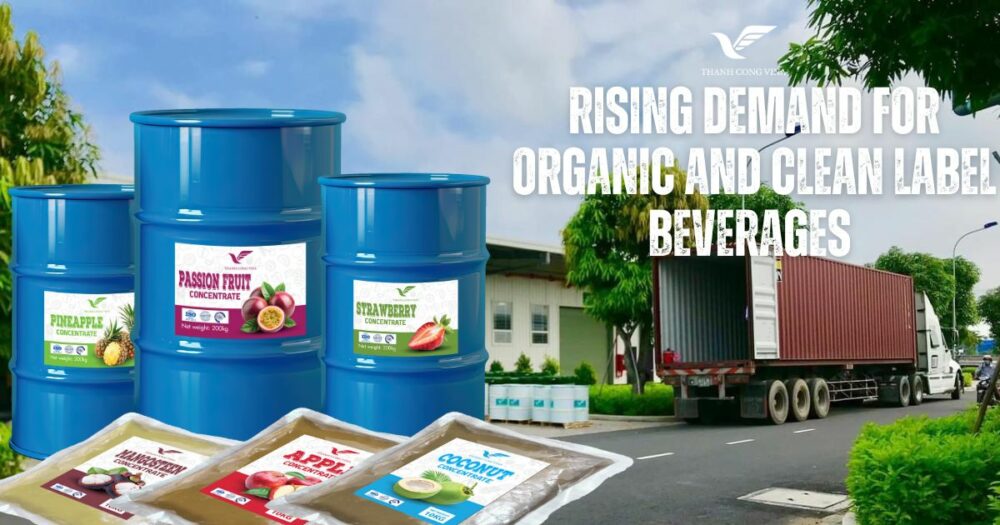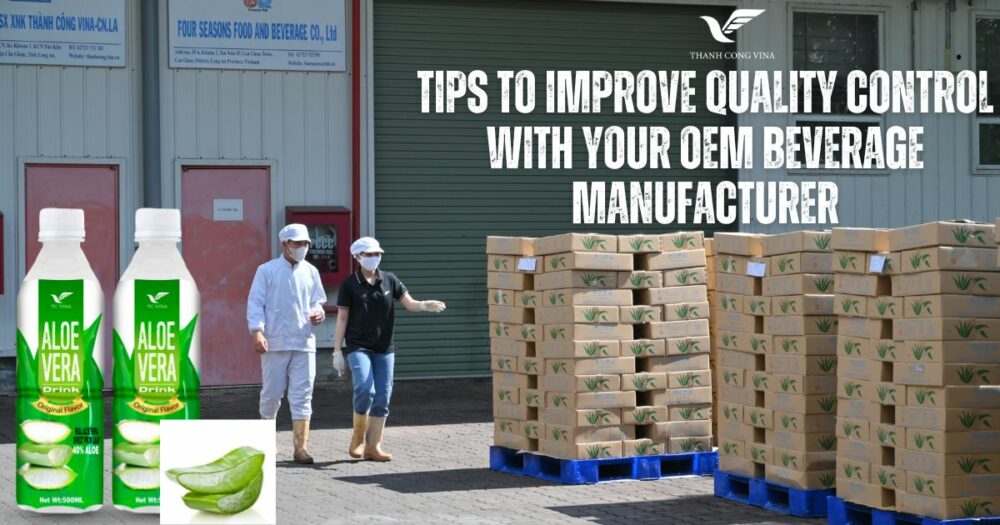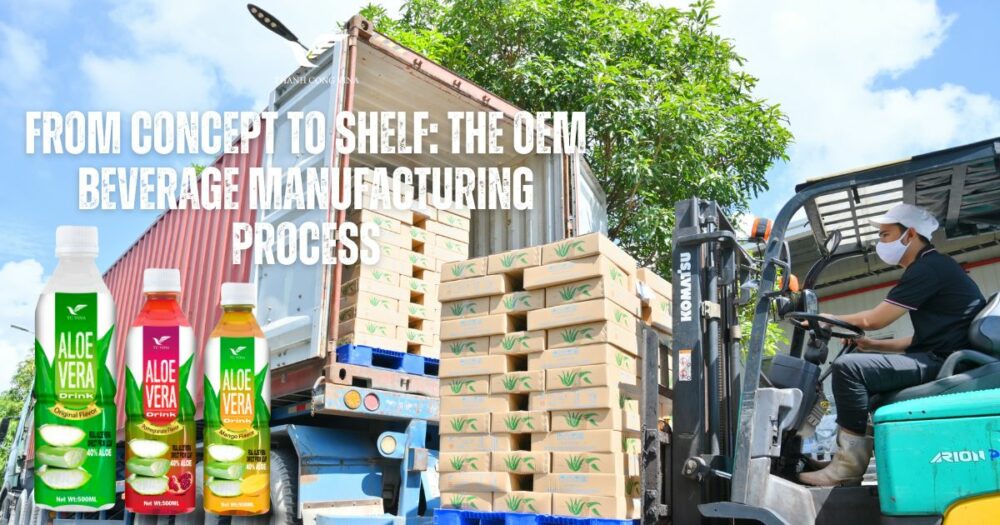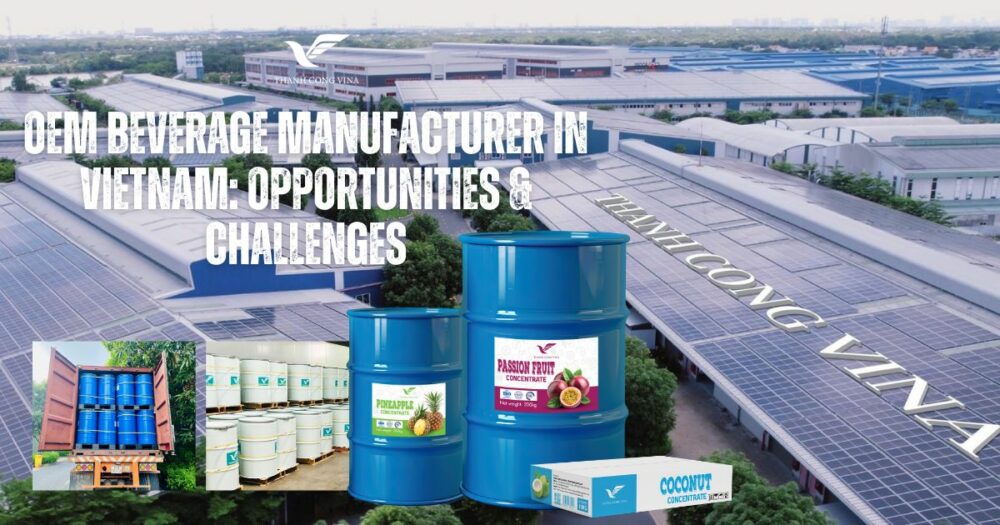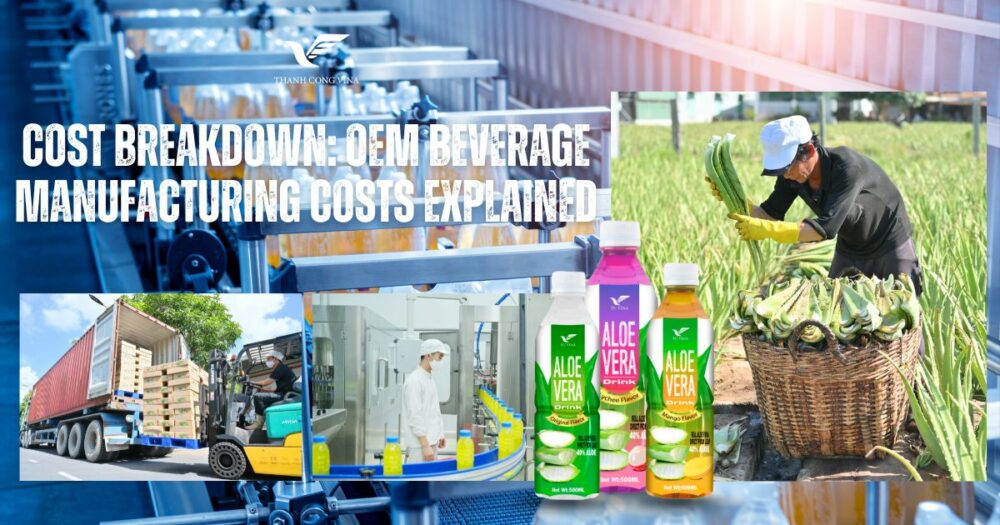In today’s highly competitive beverage market, product differentiation is no longer optional—it is the key driver for brand survival and growth. As consumers demand more unique, healthy, and functional drinks, companies are increasingly turning to OEM beverage manufacturers to develop customized formulations and innovative flavor profiles. By partnering with an experienced OEM beverage manufacturer, beverage brands can reduce R&D risks, accelerate product launches, and achieve scalable production that meets global market requirements.
Custom flavors and formulations allow brands to bring bold concepts to life—from refreshing fruit drinks and plant-based teas to functional beverages fortified with vitamins, probiotics, or herbal extracts. Working with the right partner ensures not only great taste but also regulatory compliance, market suitability, and long-term supply chain stability.
This article explores how beverage companies can collaborate effectively with an OEM beverage manufacturer to create winning custom formulations that align with consumer preferences and business strategy.
1. Understanding Customized Beverage Formulation with an OEM Beverage Manufacturer
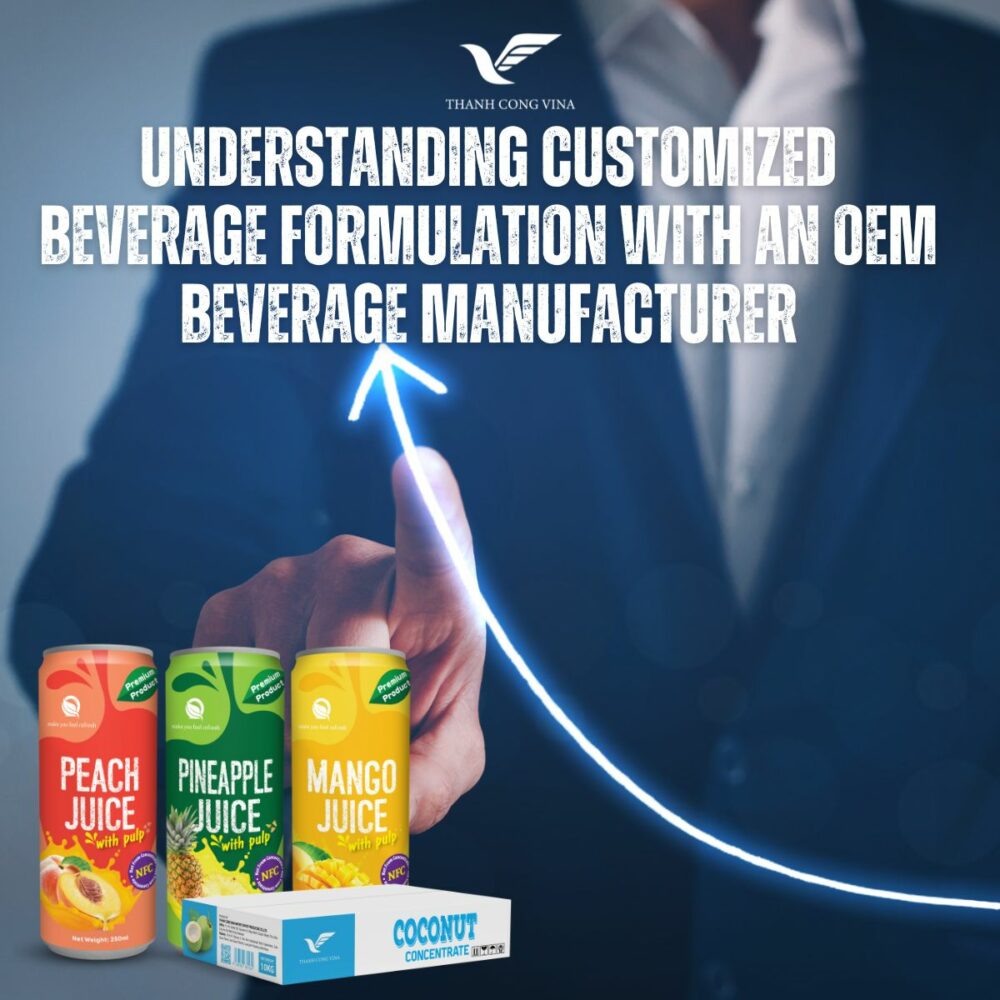
Understanding Customized Beverage Formulation with an OEM Beverage Manufacturer
Customization in beverage formulation is more than adding flavor—it involves an integrated approach to product creation, from nutritional design to sensory profiling and mass production feasibility.
1.1 What Is Beverage Formulation Development?
Formulation development focuses on building a product recipe that achieves the desired taste, texture, nutritional value, and shelf-life stability. OEM beverage manufacturers employ food scientists and flavor experts to design:
-
Base ingredients (juices, teas, dairy or plant-based liquids)
-
Sweetening systems (sugar, stevia, erythritol, honey, etc.)
-
Acidity and pH balancing
-
Stabilizers, colors, and preservatives depending on category
-
Heat treatment or aseptic technology suitability
A wrong balance can lead to separation, oxidation, sedimentation, or bitter aftertaste—so scientific precision is essential.
1.2 Flavor Customization
Flavor development requires tailoring intensity, aroma, and mouthfeel to match:
-
Regional taste preferences (e.g., sweeter for Southeast Asia, lower sugar for EU)
-
Category expectations (tropical flavors for juices, botanical notes for teas)
-
Retail positioning (premium, economy, functional wellness)
Each ingredient can influence overall sensory impact, so iterative adjustments are required.
1.3 Functional & Nutritional Enhancements
Beyond taste, beverage brands increasingly require added benefits:
-
Vitamins and minerals
-
Fiber or protein boosts
-
Herbal and medicinal extracts
-
Probiotics and prebiotics
-
Natural antioxidants like aloe vera or ascorbic acid
OEM experts test ingredient solubility, shelf stability, and bioavailability to ensure label claims remain valid.
1.4 Regulatory and Market Compliance
Compliance includes:
-
Ingredient approvals per country regulation
-
Nutritional labeling requirements
-
Allergen declaration
-
Import/export documentation
An OEM manufacturer ensures products meet both technical and commercial readiness for global distribution.
2. R&D Collaboration: From Concept to Prototype
Developing a customized beverage with an OEM manufacturer involves structured R&D stages that reduce cost and market risk.
2.1 Market-Driven Brainstorming
Successful beverages start with clear goals:
-
Target consumer segment (youth, athletes, wellness shoppers)
-
Product category and trends (low sugar, herbal, clean-label)
-
Pricing strategy and competition benchmarking
OEM beverage manufacturers often provide insights from multiple regional markets.
2.2 Lab-Scale Formulation Testing
At this stage, food scientists prepare several recipe versions to:
-
Compare flavors, textures, and sweetness levels
-
Assess ingredient compatibility and solubility
-
Perform initial stability checks
Sensory evaluation panels are used to select the closest match to brand expectations.
2.3 Pilot Testing Before Mass Production
A small production batch is made on actual processing equipment to verify:
-
Mixing and homogenization performance
-
Heat treatment or aseptic compatibility
-
Packaging integrity
-
Shelf-life and distribution condition simulation
Pilot results determine if recipe modifications are needed before full production.
2.4 Documentation and Costing
OEM beverage manufacturers provide:
-
Finalized recipe documentation
-
Ingredient cost breakdown
-
MOQ requirement and unit pricing
-
Production lead time schedule
Brands can now calculate margins and define launch planning confidently.
3. Ingredient Selection and Sourcing Strategy
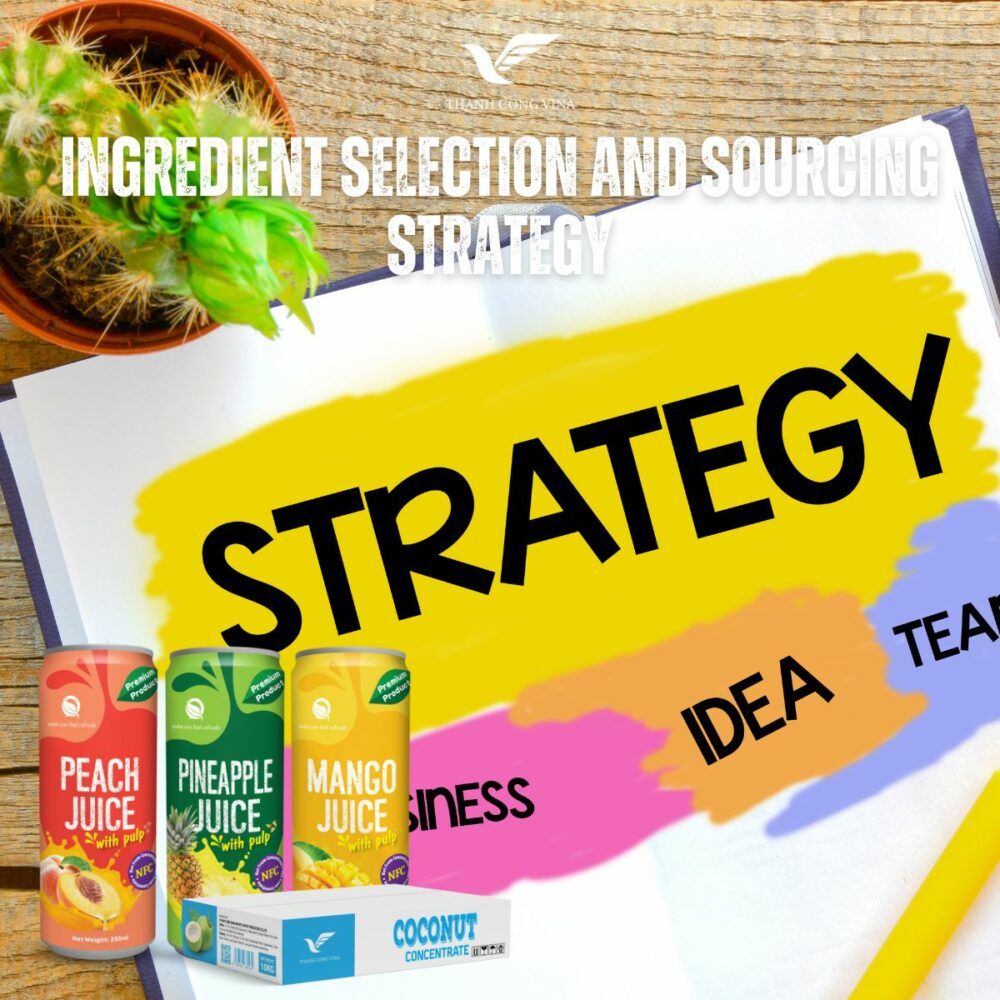
Ingredient Selection and Sourcing Strategy
Ingredient sourcing directly influences product pricing, quality consistency, and regulatory approval capability.
3.1 Sourcing Standards
Reliable OEM partners ensure:
-
Verified suppliers with quality assurance records
-
Traceability for raw materials
-
Stable sourcing of seasonal ingredients (like mango, aloe vera, berries)
-
Validity of claims for natural, organic, or functional components
Consistency in raw materials prevents unstable final products.
3.2 Natural & Clean-Label Ingredients
Trend growth in clean-label beverages requires:
-
No artificial colors or sweeteners
-
Limited use of preservatives
-
Plant-based or natural flavorings
OEM manufacturers help select ingredients that provide both clean labeling and sensory appeal.
3.3 Functional Ingredient Optimization
Not all functional components behave well in beverages. OEM experts test:
-
Interaction with other ingredients
-
Shelf-life impact
-
Impact on taste and texture
-
Dosage required to support claims
The objective is a perfect balance between health benefits and drinkability.
4. Packaging Integration into Flavor Development
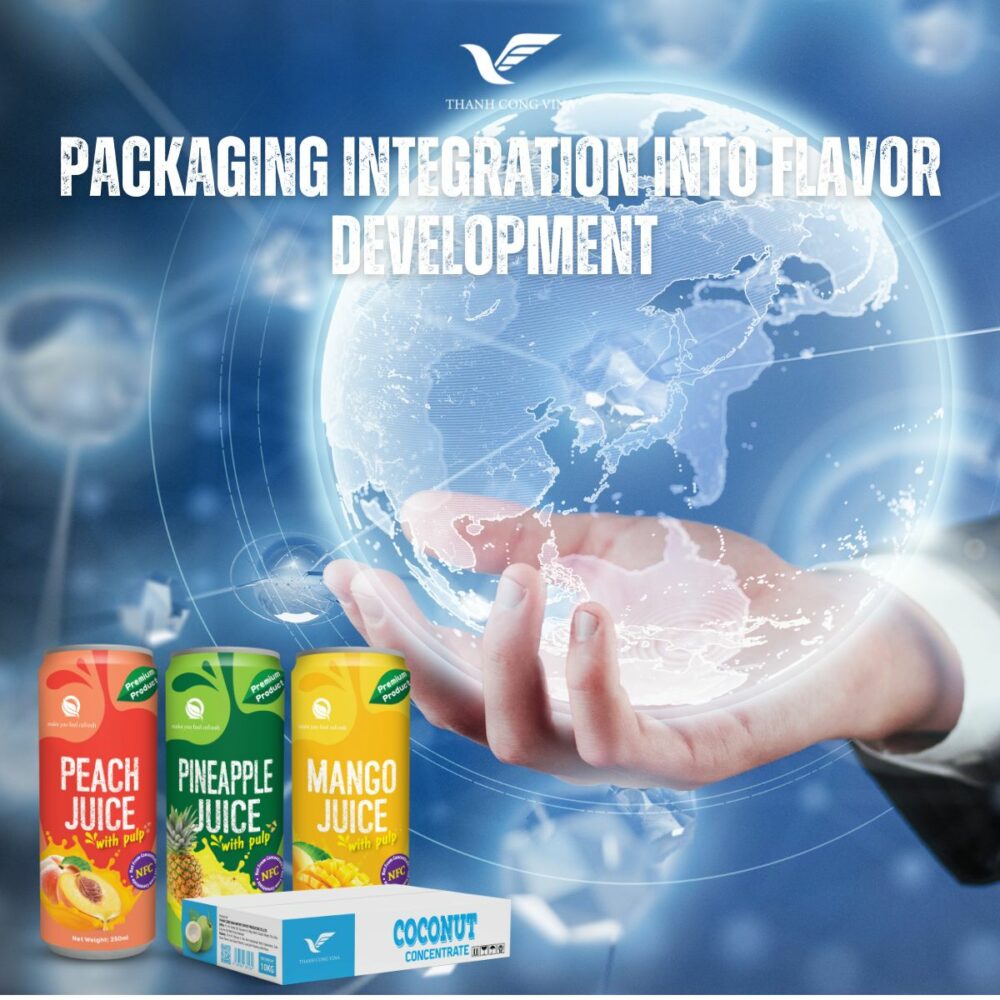
Packaging Integration into Flavor Development
Packaging affects both consumer appeal and chemical stability. Many OEM beverage manufacturing issues arise from packaging choices.
4.1 Packaging Compatibility Testing
Packaging must support:
-
pH-sensitive ingredients
-
UV protection for fruit-based or vitamin-rich beverages
-
Carbonation pressure if applicable
-
Hot-fill vs. aseptic filling process requirements
Incompatible materials can lead to leakage, oxygen penetration, or flavor degradation.
4.2 Design for Consumer Appeal
Packaging choices include:
-
PET bottles, glass bottles, aluminum cans, or paper-based cartons
-
Label design with nutritional transparency
-
Ergonomic shapes and convenience features (grab-and-go bottles)
Packaging must reflect product positioning and brand value.
4.3 Sustainability in Packaging
OEM partners increasingly support:
-
Lightweight bottle design
-
Recycled material integration
-
Reduction of secondary packaging waste
This aligns with global retailer sustainability targets.
5. Scaling Production for Market Growth
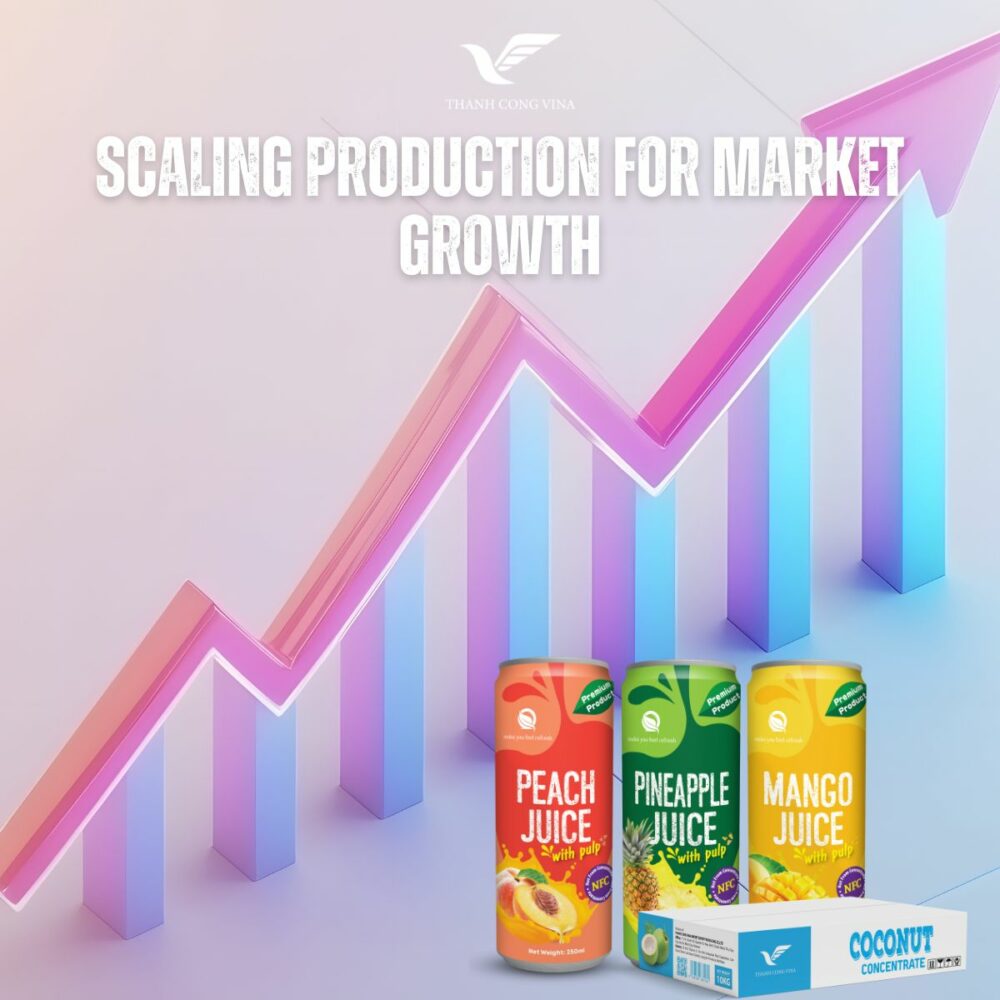
Scaling Production for Market Growth
A major reason to collaborate with an OEM beverage manufacturer is the scalability of resources and equipment.
5.1 Production Line Readiness
Key factors include:
-
Automated filling line speed (bottles/minute)
-
Mixing and homogenizing capacity
-
Heat treatment equipment (UHT, pasteurization)
-
Multiple packaging formats in the same facility
Production capacity should support expansion without switching suppliers.
5.2 Quality Assurance Through Every Batch
Quality control systems monitor:
-
pH, Brix, viscosity
-
Microbial tests and contamination prevention
-
COA (Certificate of Analysis) per batch
-
Traceability in case of recall needs
Consistency is key for brand reputation and retail success.
5.3 Lead Time and Supply Chain Management
OEM manufacturers ensure:
-
Predictable production scheduling
-
Stock allocation of high-demand ingredients
-
Efficient logistics and export documentation handling
This minimizes delays and protects brand shelf availability.
6. Flavor Innovation Trends for Future Market Expansion
Innovation drives beverage market share gains. OEM partners must stay ahead of industry trends.
6.1 Wellness-Driven Flavors
Demand is rising for:
-
Aloe vera, ginger, ginseng, curcumin drinks
-
Probiotic fermented beverages
-
Vitamin water and energy-enhanced teas
Consumers increasingly seek nutrition + taste in one drink.
6.2 Regional Flavor Localization
Flavors that succeed in one country may fail in another. OEM beverage manufacturers adjust product formulas to:
-
Respect cultural taste norms
-
Reduce sugar for health-conscious markets
-
Add local specialty flavors (e.g., tropical fruit blends in Asia)
Localized customization supports export success.
6.3 Low-Sugar and Natural Taste Reinvention
Sugar reduction must maintain enjoyable flavor. Approaches include:
-
Stevia with masking technology
-
Fruit concentrates as natural sweeteners
-
Flavor boosters to compensate lower sugar levels
Brands win when “healthy” still tastes refreshing.
Conclusion
Custom beverage formulation is a complex and strategic process that requires scientific capability, market awareness, and consistent production performance. By working with a highly experienced OEM beverage manufacturer, brands can transform product ideas into scalable commercial beverages that align with consumer expectations and competitive market dynamics. From ingredient sourcing and pilot testing to packaging selection and flavor innovation, the right OEM partner provides the expertise needed to accelerate product success.
Thanh Cong Vina IEP CO., LTD supports beverage brands and import partners worldwide in developing unique drink formulations that reflect modern health and sustainability trends. With a strong focus on flavor creativity and commercialization efficiency, TCVina offers professional OEM beverage manufacturing solutions that help companies expand faster and differentiate themselves in a crowded market.
